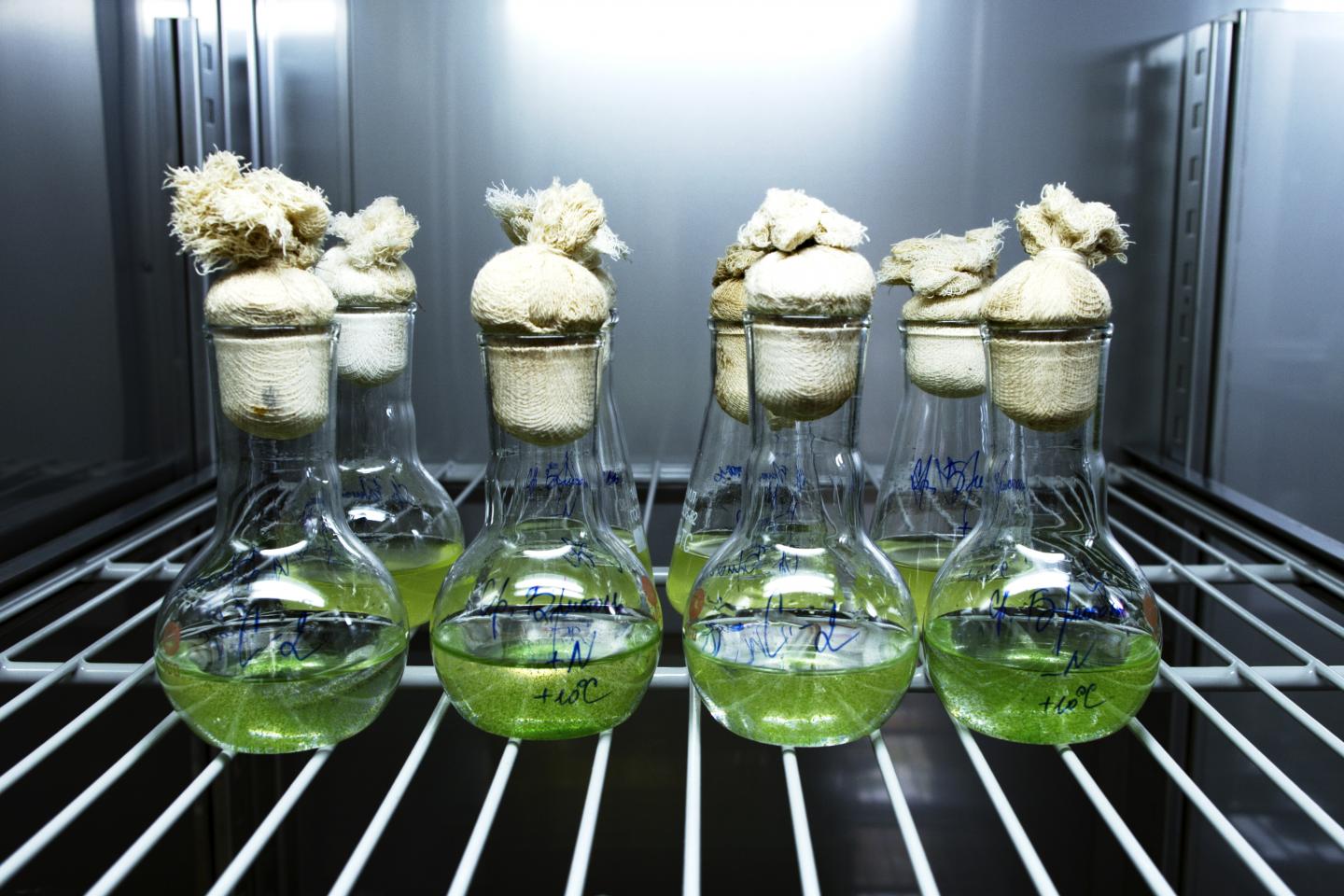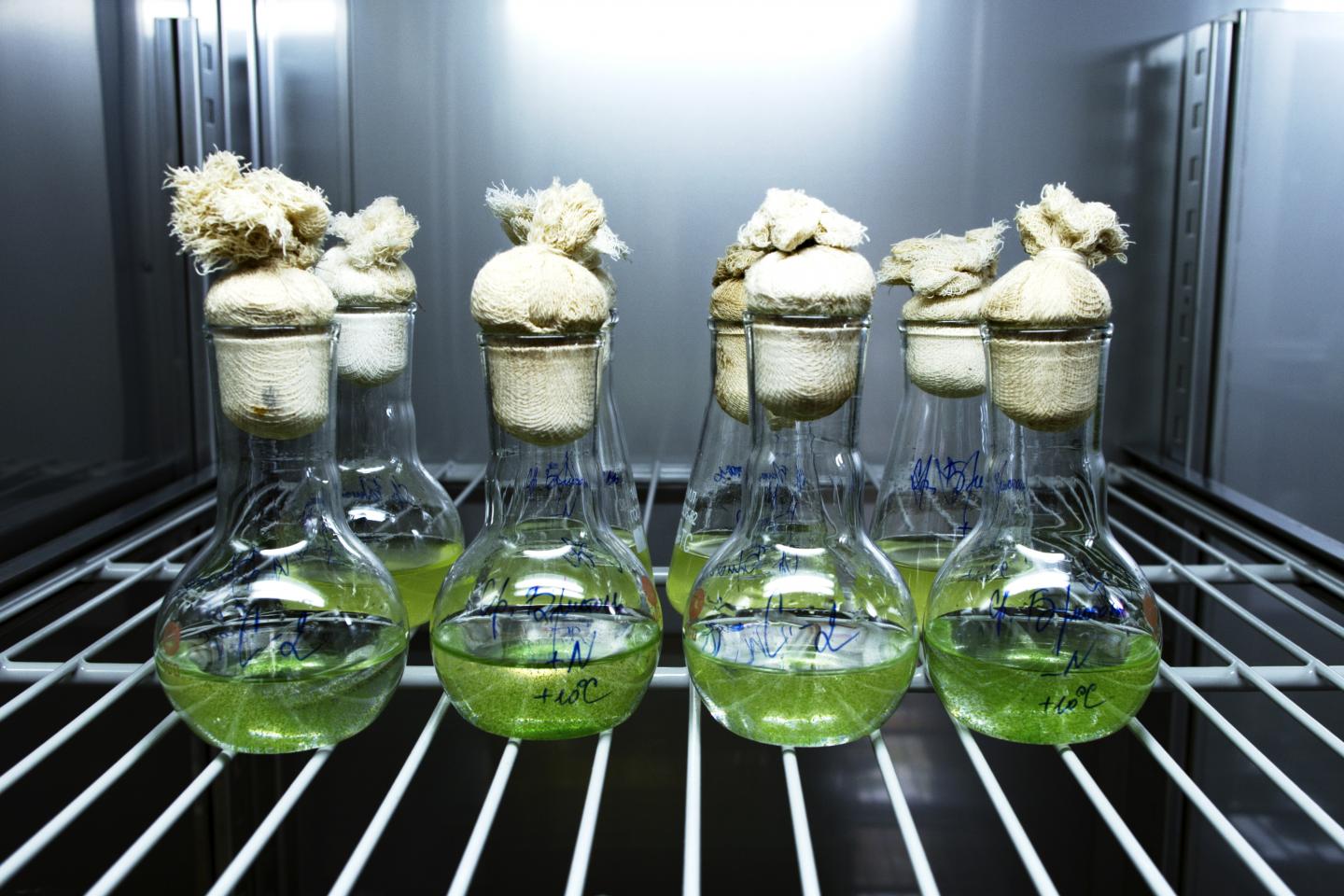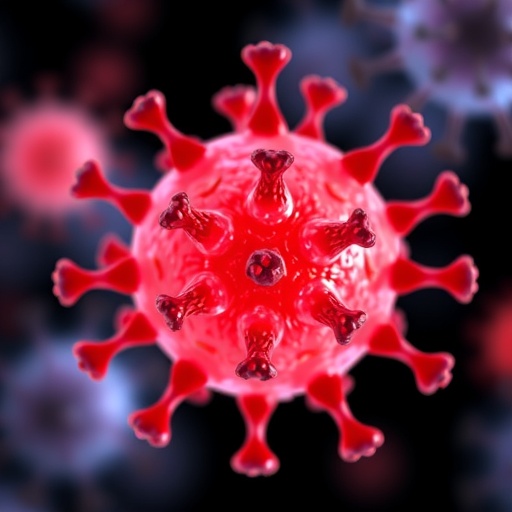
Credit: Piotr Kamenski
An information system created within the framework of the "Noah's ark" project has started working at the Lomonosov Moscow State University in the beginning of 2017. It includes data about samples from biological collections of the University and project partners. There are no comparable information systems in the world, which allows both using information concerning biological samples of various origin and managing depositaries of biomaterial. The actual version of the system is available at the following URL: http://depo.msu.ru/.
Data and organisms, represented in the system, have been already actively used by scientists, who are the members of the "Noah's ark" project. That has been reflected in the articles, published by them in PLoS ONE, Photosynthesis Research, and he most recent article appeared in Molecular Phylogenetics and Evolution.
Scientists from the Lomonosov Moscow State University elaborate for each sample from collections detailed certificates, containing various information about each collection unit. The presence of a sample in a collection isn't enough, as its full description is also very important. It's necessary to understand what kind of organism it is, who, where and when gathered it, what special there is about it and how it could be used in science and in practice. Alexey Solovchenko, the Manager of the "Noah's ark" Microorganisms and Fungi Division, thinks that this information system could potentially become a real knowledge database of living organisms kept in the depositary. It could store not only descriptions of organisms, but also all techniques applied for operating with them, and, namely, how to cultivate, study and store them for a long period of time. That is crucially important for collections of unicellular organisms such as bacteria and microalgae.
Piotr Kamenski, the "Noah's ark" project scientific coordinator, a Leading Researcher at the Faculty of Biology, Lomonosov Moscow State University, shares: "The basic principle of system operation is a self-adjusting form of a sample certificate, initially comprising minimum information, typical of each sample, disregarding the biomaterial and collection types. To such minimum information one could refer data about where and how this sample has been got and information about the living organism from which the sample has been taken. The rest part of the certificate is adjusted so that it could fully and in the best way reflect all data, different for various living beings and depository items, from bacteria to animals".
An important "bonus" of the system is an option of automatic loading of already known data about the stored samples from reputable international databases, such as Catalog of Life, NCBI GenBank and others. So, a sample certificate could contain quite various information, up to the full genomic sequence of an organism. The project coordinator says: "A genomic browser, built-in the system, is now in the process of development. We possess a dozen sample genomes, those genomes have been sequenced by us within the framework of the "Noah's ark" project. For other samples it's necessary to get an access to external databases as we don't set a task of all genomes' sequencing by our own forces. Moreover, it's not possible — there are too many samples in our collections, so we can't even dream about their total sequencing. That's why the only possible solution is to integrate with already existing databases". Eventually, the system will be completed by bioinformatic services, with the help of which depositary users could gain maximum profit from the information and biomaterial, stored there.
Creation of such an ambitious electronic system requires a strict sequence of samples, what has been provided by bar-coding. Each sample has got a unique bar-code. Taking photo of a barcode with a usual smartphone allows finding all available information about this sample in the database and loading its certificate in the split second. Designers are going to develop comfortable tools for processing of information, containing in the system. Moreover, they are going to install on-line application form for getting of biomaterial both for internal and external users.
The amount of the samples, available in the system, is constantly increasing due to importing new collections and adding information from already exiting ones. Piotr Kamenski comments: "By this time we've imported about 510 thousand samples. 500 thousand of them refer to herbarium samples and about 10 thousand – to fully described microorganisms. For the latter apart from micrographs there are detailed descriptions up to eating preference and "fingerprints" (namely, paragraphs of genome sequences). Till the end of 2018 we are going to finish with importing all samples, existing at the Lomonosov Moscow State University collections, into the information system."
The information system is designed so that it could contain data, concerning not only the Lomonosov Moscow State University collections, but also collections of other scientific organizations. Thus, for the first time there has been created a pilot system able to integrate all Russian biocollections in one information field.
Piotr Kamenski continues: "At the moment there are 19 collections in the system and the process of inventory, digitizing and data loading is going on. Collections from the Lomonosov Moscow State University Depositary are physically located in the laboratories, where people work with them. If we take the Faculty of Biology, we should say that it possesses at least one hundred collections. Previously, collections' owners knew little about each other, so only people, who directly worked with collections, had access to them. After the startup of our information system the situation has radically changed."
###
The creation of the information system of the Lomonosov Moscow State University Depositary takes place within the framework of the grant, provided by the Russian Science Foundation, called "Scientific basis for the creation of the National depositary bank of living systems (the scientific part of the "Noah's ark" project).
Media Contact
Vladimir Koryagin
[email protected]
http://www.msu.ru





